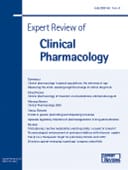
“Cannabinoids block pain responses in virtually every laboratory pain model tested.
In models of acute or physiological pain, cannabinoids are highly effective against thermal, mechanical, and chemical pain, and are comparable to opioids in potency and efficacy.1 In models of chronic pain, cannabinoids exhibit efficacy in the modulation of both inflammatory2 and neuropathic pain.3
Recent reviews describe an endogenous cannabinoid system involved in pain modulation that produces analgesia through the same brainstem circuitry involved in opioid analgesia.1., 4., 5., 6. Although co-administration of Δ-9-tetrahydrocannabinol (THC) with μ opioid agonists can potentiate the antinociceptive effects of each agent, an opioid is not required for cannabinoid analgesia.5., 6. Co-administration of a cannabinoid may lead to a lower opioid requirement. In an N-of-1 trial, oral THC reduced the pain of familial Mediterranean fever such that the use of breakthrough opioid for pain relief decreased significantly.7
Recently, in Canada, the Medical Marijuana Access Program allows patients to apply to Health Canada for access to dried cannabis for medicinal purposes. Although smoked cannabis is not an ideal delivery system, it is efficient and results in plasma concentration curves parallel to those seen after intravenous administration.8 We present three patients who used small doses of smoked marijuana in combination with an opioid.
These cases are consistent with preclinical work demonstrating that cannabinoids exhibit analgesic effects and may potentiate the antinociceptive effects of opioids. These patients were able to decrease the dose of opioid by 60–100% as compared to before the regular use of smoked marijuana. With the introduction of smoked marijuana, each patient reported better pain control.
Unfortunately, the source of smoked marijuana used by patients, and the percentage of THC in it, is unknown. All patients reported previous exposure to cannabis at some time in their lives before the onset of their pain, and the relevance of this experience also is unknown. Standardized measures of pain were not used, and the information presented was based on the patients’ verbal report when they presented for follow-up appointments at the Pain Management Unit. Nonetheless, these cases suggest that further research regarding the role of cannabinoids as analgesics and the combination of cannabinoids with opioids in the control of pain is needed.”
http://www.jpsmjournal.com/article/S0885-3924(03)00142-8/fulltext









